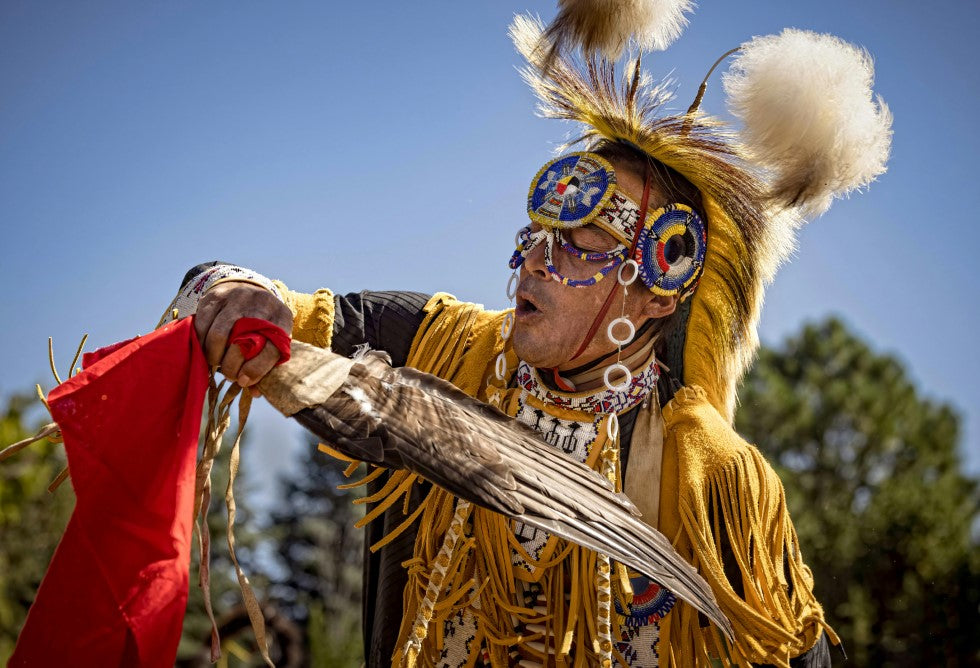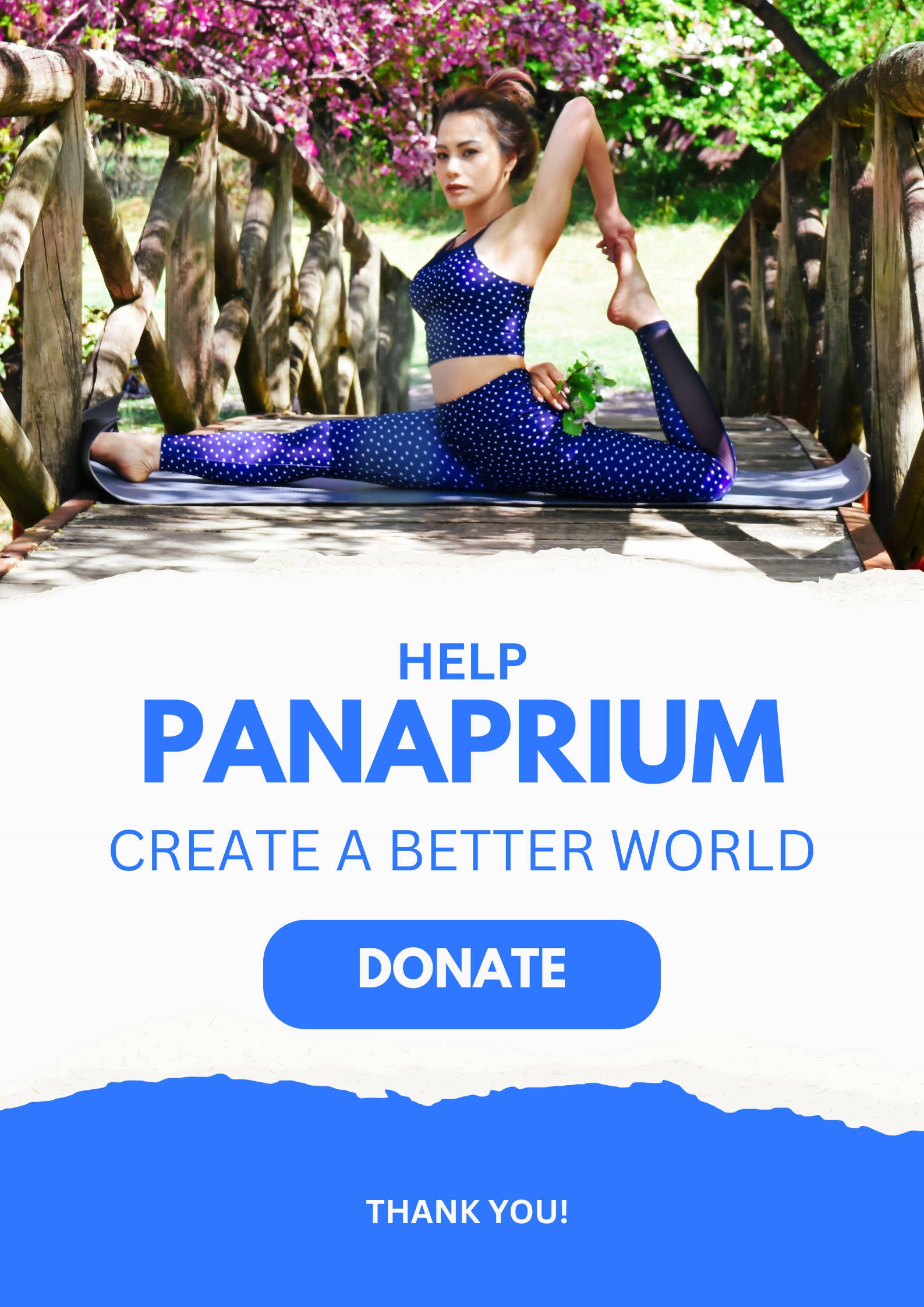
Die Ureinwohner Amerikas sind über ein weites Gebiet verteilt und in viele verschiedene Stämme unterteilt, jeder mit seiner eigenen Kultur, Tradition und Art traditioneller Kleidung. Trotz dieser Unterschiede gibt es jedoch viele ähnliche Kleidungsstücke und Stile zwischen den Stämmen.
Bevor es Händler und Siedler gab, mussten die amerikanischen Ureinwohner Kleidung aus dem herstellen, was sie in ihrer natürlichen Umgebung finden konnten, und Nähfertigkeiten entwickeln, die von Generation zu Generation weitergegeben werden. Viele dieser Fertigkeiten und Traditionen werden von den amerikanischen Ureinwohnern noch heute angewandt.
Traditionelle Kleidung wird immer noch zu zeremoniellen und feierlichen Anlässen getragen. Viele Indianer kombinieren traditionelle Kleidung auch mit moderneren Stilen für den Alltag. Traditionelle Kleidung gilt als heilig und verbindet die Indianer weiterhin mit ihrem Erbe und ihren Traditionen.
Panaprium ist unabhängig und wird vom Leser unterstützt. Wenn Sie über unseren Link etwas kaufen, erhalten wir möglicherweise eine Provision. Wenn Sie können, unterstützen Sie uns bitte monatlich. Die Einrichtung dauert weniger als eine Minute und Sie werden jeden Monat einen großen Beitrag leisten. Danke schön!
Material vom Land

Alle amerikanischen Ureinwohner fertigten ihre Kleidung aus dem, was ihnen in ihrer Umgebung zur Verfügung stand. Prärievölker verwendeten für ihre Kleidung Felle und Häute von Hirschen und Bisons, während Stämme weiter nördlich in der Arktis auf Felle und Häute von Robben und Karibus angewiesen waren, um sich in ihrer Kleidung warm zu halten.
Dekorationen auf jedem Stück
Jedes Kleidungsstück wurde mit Gegenständen aus dem Land verziert, wie Holz, Muscheln, Knochen, Tierfedern und Zähnen. Als die Händler im 19. Jahrhundert ankamen, wurden den amerikanischen Ureinwohnern Glasperlen vorgestellt, mit denen sie bis heute ihre Kleidung verzieren.
Kleidungsstücke wurden mit Mineralien, Tonen und Pflanzen aus der Umgebung gefärbt.
Wie ihre Kleidung hergestellt wurde
Die ersten amerikanischen Ureinwohner nähten jedes Kleidungsstück mitsamt aller Verzierungen und Dekorationen von Hand. Traditionell jagten die Männer nach Fellen und Materialien, während die Frauen daraus die Kleidung des Stammes herstellten.
Viele Ureinwohner Amerikas nähen und fertigen ihre traditionelle Kleidung noch immer mit der Hand, sind sehr stolz darauf und verbinden dadurch eine Verbindung zu ihren Vorfahren und ihrem Erbe.
Lendenschurz

Lendenschurze wurden von amerikanischen Ureinwohnern in heißen Gegenden getragen. Sie bestanden aus einem Stoff, der an der Vorder- und Rückseite der Taille der Männer zu einem Gürtel zusammengerafft war, ohne Hemd. Dieses Kleidungsstück, auch Lendenschurz genannt, wird heutzutage im Allgemeinen nicht mehr getragen.
Kleider mit Perlen

Viele Indianerinnen trugen Kleider aus Fellen, die mit Perlen verziert waren. Ein Kleid für eine erwachsene Frau bestand aus mehreren Fellen und wog zwischen 13 und 16 Pfund.
Jedes Kleid wurde für jede Frau individuell angefertigt und keine zwei Kleider waren auf die gleiche Weise verziert.
Muster und Symbole

Jedes Kleidungsstück ist einzigartig verziert und repräsentiert die Person, die es trägt, die verschiedenen Geschichten, Symbole und Farben ihrer einzigartigen Stämme. Alle Stücke haben für die amerikanischen Ureinwohner eine besondere Bedeutung, da sie ihrem Stamm und ihrer Familie Ehre erweisen, indem sie ihre Lehren, ihr Erbe und ihre Traditionen weitertragen.
Mokassins

Mokassins waren das gängigste Schuhwerk der amerikanischen Ureinwohner und werden auch heute noch getragen. Jeder Stamm hat seine eigene Art, seine Mokassins herzustellen und zu verzieren. Viele Mokassins haben die Farben des jeweiligen Stammes und ihre Verzierungen spiegeln die Geschichten und Werte des jeweiligen Stammes wider.
Kriegsmütze

Heutzutage sieht man die Kriegsmütze bei zeremoniellen Anlässen und Mächten und sie galt und gilt als heiliges Stück. Diese Kopfbedeckung besteht aus Adlerfedern, die als eine der höchsten Ehren gelten.
Jede Adlerfeder auf einem Kopfschmuck steht für einen Akt des Mutes und der Ehre oder für Arbeit und Dienst an der Gemeinschaft. Die meisten Kriegshauben werden von indianischen Anführern und Ältesten getragen, die sich ihre Federn im Laufe ihres Lebens verdient haben.
Plötze (Kopfschmuck)

Obwohl der Kriegshut bekannter ist, trugen die meisten amerikanischen Ureinwohner stattdessen einen Pudelhut. Ein Pudelhut ist ein Kopfschmuck aus Stachelschweinhaar und anderen Tierhaaren, der oft in einer leuchtenden Farbe wie Gelb oder Rot gefärbt ist. Er wird von Tänzern bei Powwows getragen und wurde früher von Kriegsveteranen getragen.
Jingle-Kleid

Ein Jingle Dress ist ein bunt gemustertes Kleid, das mit geräuscherzeugendem Material überzogen ist. Es wird noch heute von Indianerinnen bei Powwow-Tänzen getragen. Traditionell wurden die Geräuschemacher aus Kautabakdeckeln hergestellt, die zu Kegeln gerollt wurden. Heutzutage werden sie aus Blech hergestellt.
Das Schellenkleid soll aus einem Traum eines Medizinmanns oder Medewinni stammen, der sich die Kleider und Lieder vorstellte und Anweisungen zur Herstellung dieser erhielt.
Poncho

Obwohl man annimmt, dass die Spanier in Ländern wie Brasilien und Mexiko den Poncho zuerst getragen haben, geht man davon aus, dass die amerikanischen Ureinwohner ihn schon lange vorher trugen. Ein Poncho ist leicht herzustellen und schützt vor den unterschiedlichsten Wetterbedingungen, von Sonne bis Regen, von Kälte bis Schnee.
Der Poncho ist noch immer ein vielseitiges, praktisches Kleidungsstück, das von amerikanischen Ureinwohnern an unterschiedlichen Orten und in unterschiedlichen Klimazonen getragen wird.
Dush-Toe

Ein Dush-Toe ist ein Haarschmuck, den indianische Frauen beim Tanzen tragen. Es ist ein verziertes Accessoire in Form eines Schmetterlings oder einer Sanduhr, von dem oft Bänder herabfließen. Jeder Dush-Toe ist für die Frau individuell mit Perlen, Bildern und Mustern geschmückt.
Kleidung mit Bändern

Bänder sind auf vielen Kleidungsstücken der amerikanischen Ureinwohner zu sehen. Sie gelten als heilig und jedes Band symbolisiert Identität, Widerstandskraft und Überleben. Bänder werden von Hand genäht, um Bänderröcke, Kleider und mehr herzustellen.
Jedes Stück aus Bändern repräsentiert die Person, die es trägt, und ihre einzigartige Vielfalt und Stärke. Bänderkleidung wird immer noch zu zeremoniellen Zwecken, Tänzen und Powwows getragen.
Parka

In kälteren Klimazonen trugen die amerikanischen Ureinwohner Parkas. Die Inuit, Ureinwohner im Norden Kanadas und Alaskas, waren die ersten Menschen, die dieses Kleidungsstück herstellten und trugen. Traditionell wurde ein Parka aus Tierhaut gefertigt, wobei das Tierfell an der Innenseite noch befestigt war, um warm zu halten.
Heutzutage tragen viele Inuit immer noch Parkas aus Haut und Fell, während andere amerikanische Ureinwohner einen Hybrid aus modernem Stoff mit einer Pelzkapuze tragen.
Bandolier-Tasche

Eine Bandoliertasche ist eine Schultertasche aus Leder. Ursprünglich trugen die amerikanischen Ureinwohner sie, um ihre besonderen Gegenstände wie Tabak, Pfeifen, Medikamente und Feuersteine zum Feuermachen aufzubewahren. Heutzutage tragen sowohl Männer als auch Frauen diese Tasche für alltägliche Besorgungen sowie für Powwows und besondere Zeremonien.
Sie sind oft mit Perlen, Stickereien und anderen Verzierungen verziert und werden individuell für jede Person und jede Tasche angefertigt.
War dieser Artikel hilfreich für Sie? Bitte teilen Sie uns in den Kommentaren unten mit, was Ihnen gefallen oder nicht gefallen hat.
About the Author: Shelby Bonner
Wogegen Wir Kämpfen
Weltweit-Konzerne produzieren in den ärmsten Ländern im Übermaß billige Produkte.
Fabriken mit Sweatshop-ähnlichen Bedingungen, die die Arbeiter unterbezahlt.
Medienkonglomerate, die unethische, nicht nachhaltige Produkte bewerben.
Schlechte Akteure fördern durch unbewusstes Verhalten den übermäßigen Konsum.
- - - -
Zum Glück haben wir unsere Unterstützer, darunter auch Sie.
Panaprium wird von Lesern wie Ihnen finanziert, die sich unserer Mission anschließen möchten, die Welt völlig umweltfreundlich zu gestalten.
Wenn Sie können, unterstützen Sie uns bitte monatlich. Die Einrichtung dauert weniger als eine Minute und Sie werden jeden Monat einen großen Beitrag leisten. Danke schön.































0 Kommentare